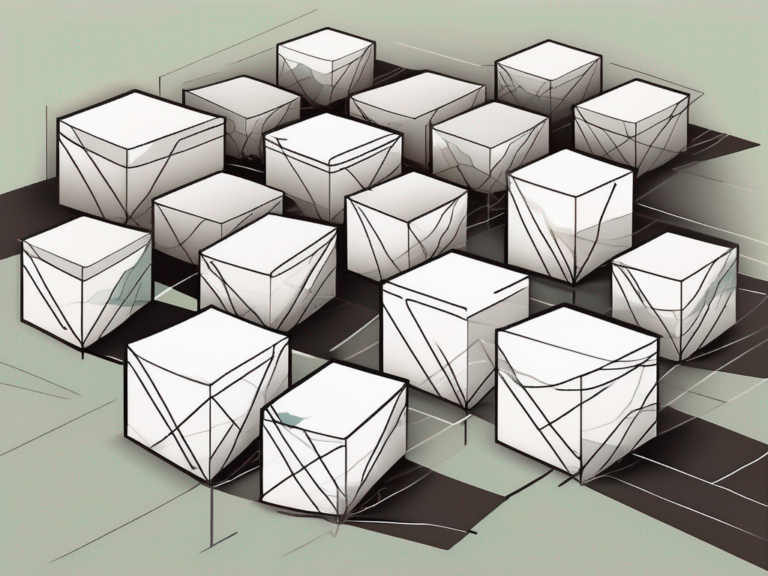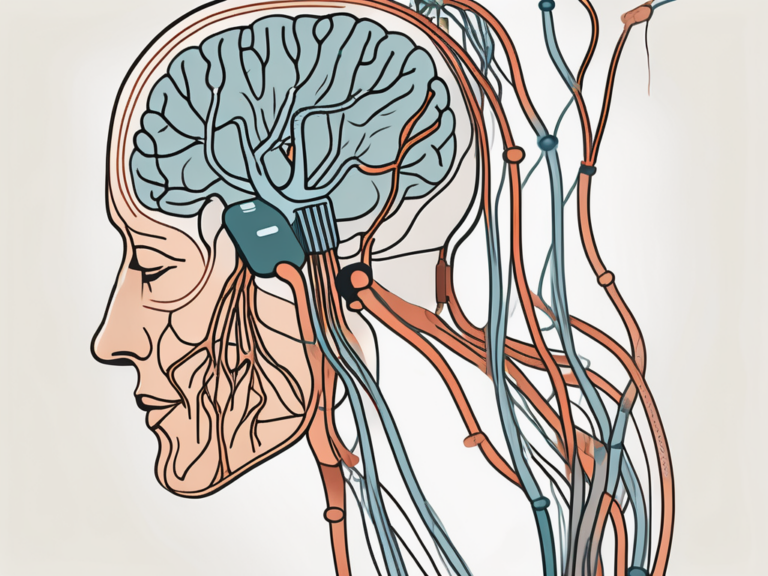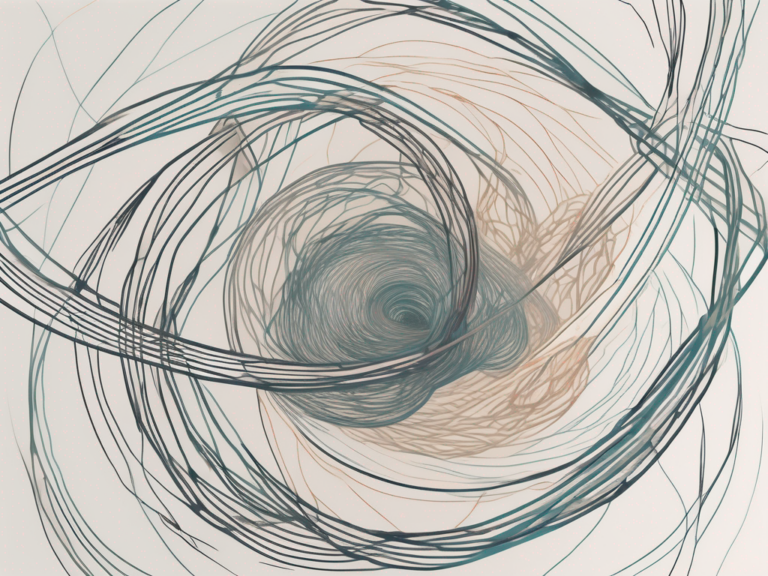The Role of the Accessory Nerve in Human Anatomy
The accessory nerve, also known as the eleventh cranial nerve or CN XI, is a critical component of the human anatomy. As a part of the peripheral nervous system, it plays a significant role in various physiological processes. Understanding the intricate details of this nerve is paramount for medical professionals and researchers alike. In this article, we will delve into the anatomy, function, disorders, treatment, and ongoing research pertaining to the accessory nerve.
Understanding the Accessory Nerve
The accessory nerve is a motor nerve that originates from the medulla oblongata and the upper spinal cord. Functionally, it is divided into two distinct portions: the cranial and spinal portions. The cranial portion arises from the nucleus ambiguus in the medulla oblongata, while the spinal portion originates from the ventral horn of the upper cervical spinal cord.
The accessory nerve plays a crucial role in coordinating voluntary movements of the head and shoulders. It works in conjunction with other nerves to ensure smooth and precise muscle control, allowing for actions such as turning the head, shrugging the shoulders, and maintaining posture. Dysfunction of the accessory nerve can lead to difficulties in performing these movements, impacting daily activities and overall quality of life.
Definition and Location of the Accessory Nerve
The accessory nerve is classically defined as the eleventh cranial nerve (CN XI) in the human body. It is responsible for innervating specific muscles, primarily those involved in head and shoulder movements. The cranial portion of the accessory nerve exits the skull through the jugular foramen, while the spinal portion emerges between the cranial and spinal roots of the spinal nerves of the neck (C1-C5).
The accessory nerve is unique in its dual origin, reflecting its diverse functions in both cranial and spinal regions. This complexity allows for precise control over a wide range of muscles, contributing to the intricate movements required for various tasks, from simple gestures to complex physical activities.
The Structure of the Accessory Nerve
The accessory nerve is composed of multiple fascicles that merge together to form a single trunk. This trunk then divides into cranial and spinal branches. The cranial branches supply innervation to the muscles of the soft palate, pharynx, and larynx, while the spinal branches primarily control the trapezius and sternocleidomastoid muscles.
The intricate branching pattern of the accessory nerve allows for targeted muscle control, ensuring that specific movements can be executed with precision. This level of detail in innervation highlights the specialized nature of the accessory nerve and its essential role in facilitating coordinated muscle actions essential for everyday tasks and complex physical activities.
The Function of the Accessory Nerve
The accessory nerve plays a crucial role in both the muscular and nervous systems.
The accessory nerve, also known as cranial nerve XI, is a complex nerve that consists of both cranial and spinal components. It is unique in that it has both motor and proprioceptive functions, making it a key player in various bodily movements and functions.
Role in Muscular System
The cranial branches of the accessory nerve are responsible for controlling the muscles involved in speech and swallowing. These muscles contribute to the articulation of sounds, vocal cord movement, and the ability to swallow food and liquids. The spinal branches, on the other hand, innervate the trapezius and sternocleidomastoid muscles, which are vital for head and neck movements, such as rotation, flexion, and extension.
Furthermore, the accessory nerve works in conjunction with other cranial nerves, such as the vagus nerve, to ensure proper functioning of the muscles involved in speech and swallowing. This coordinated effort is essential for activities like speaking clearly and swallowing without difficulty.
Contribution to the Nervous System
Besides its direct impact on muscles, the accessory nerve indirectly influences the nervous system. By facilitating head and neck movements, it aids in maintaining proper spinal alignment and posture, preventing strain and injury. Additionally, these movements also play a role in proprioception, providing feedback to the central nervous system about the positioning of body parts in space.
Moreover, the accessory nerve is involved in the coordination of movements between the head and neck, ensuring smooth and precise actions. This coordination is crucial for various activities, from simple head turns to more complex movements like tilting and nodding.
Disorders Associated with the Accessory Nerve
While the accessory nerve is typically robust and resilient, it is susceptible to certain disorders. Understanding the complexities of these disorders is crucial for proper diagnosis and treatment.
The accessory nerve, also known as cranial nerve XI, plays a vital role in controlling specific muscles in the neck and shoulders. It is a unique cranial nerve as it has both cranial and spinal components, making it susceptible to a range of disorders.
Causes of Accessory Nerve Damage
Damage to the accessory nerve can occur due to various factors, including trauma, surgical interventions, infections, and nerve compression. Trauma, such as car accidents or sports injuries, can result in direct injury to the nerve or surrounding structures. Surgical procedures in the neck and upper chest region may inadvertently disrupt the accessory nerve’s integrity. Additionally, infections such as viral meningitis or abscesses can cause inflammation and damage to the nerve.
Furthermore, repetitive strain injuries or prolonged poor posture can also contribute to accessory nerve dysfunction. These factors can lead to chronic compression of the nerve, resulting in symptoms that may mimic other neurological conditions.
Symptoms and Diagnosis of Accessory Nerve Disorders
Disorders involving the accessory nerve can manifest in a variety of ways. Common symptoms may include weakness or paralysis of the muscles innervated by the nerve, difficulty speaking or swallowing, and neck pain. Diagnosis of accessory nerve disorders involves a thorough clinical evaluation, including a detailed medical history, physical examination, and potentially imaging studies such as magnetic resonance imaging (MRI) or computed tomography (CT) scans.
It is essential for healthcare providers to differentiate between primary accessory nerve disorders and secondary involvement due to underlying conditions. Collaborative efforts between neurologists, otolaryngologists, and physical therapists are often necessary to develop a comprehensive treatment plan tailored to the individual needs of the patient.
Treatment and Management of Accessory Nerve Disorders
Effectively managing and treating accessory nerve disorders can significantly improve patient outcomes and quality of life.
Accessory nerve disorders can be complex and challenging to treat, requiring a multidisciplinary approach for optimal outcomes. Along with traditional medical interventions, holistic therapies such as acupuncture, massage therapy, and mindfulness practices have shown promising results in managing symptoms and promoting overall well-being in patients with accessory nerve disorders.
Surgical Interventions
In cases where the accessory nerve is severely damaged, surgical intervention may be necessary. Surgeons may attempt nerve repair or grafting techniques to restore nerve function. However, the success of these procedures depends on the extent and location of the damage, as well as the overall health of the patient.
It is essential for patients undergoing surgical interventions for accessory nerve disorders to have a comprehensive pre-operative evaluation to assess their suitability for the procedure. Post-operative care and rehabilitation play a crucial role in ensuring optimal recovery and long-term success of the surgical intervention.
Physical Therapy and Rehabilitation
For individuals with less severe accessory nerve damage, physical therapy and rehabilitation are crucial components of their treatment plan. Physical therapists can provide specialized exercises and techniques to improve muscle strength, coordination, and range of motion. Speech therapists may also assist patients in regaining control over their vocal cords and speech abilities.
Collaboration between healthcare professionals, including physical therapists, occupational therapists, and speech therapists, is essential in developing personalized rehabilitation programs tailored to the specific needs and goals of each patient. Regular monitoring and adjustments to the rehabilitation plan are necessary to ensure continued progress and functional improvement.
The Accessory Nerve in Medical Research
As medical knowledge advances, research regarding the accessory nerve continues to expand. The accessory nerve, also known as cranial nerve XI, plays a crucial role in controlling certain muscles in the neck and shoulders. It is a key player in movements like head rotation and shoulder shrugging, highlighting its importance in everyday activities.
Recent Discoveries and Advances
Recent studies have explored the potential regenerative capabilities of the accessory nerve. Researchers are investigating ways to enhance nerve regeneration and functional recovery after injuries, offering hope for improving outcomes in patients with accessory nerve damage. Understanding the intricate cellular processes involved in nerve regeneration is essential for developing effective treatment strategies. Furthermore, advancements in neuroimaging techniques have allowed for more detailed visualization and mapping of the accessory nerve’s course, aiding in surgical planning and precision.
Future Directions in Accessory Nerve Research
Future research endeavors in the field of accessory nerve study aim to elucidate the intricate mechanisms involved in nerve regeneration and repair. Scientists are exploring innovative approaches, such as stem cell therapies and tissue engineering, to promote nerve regrowth and functional restoration. The potential of utilizing bioengineered scaffolds to guide nerve regeneration holds promise for enhancing recovery outcomes. Moreover, ongoing research seeks to uncover the underlying genetic and molecular factors that influence accessory nerve disorders, paving the way for targeted therapies and personalized treatments. Understanding the genetic predispositions to accessory nerve disorders can revolutionize treatment approaches, moving towards a more personalized and effective healthcare model.
In Conclusion
The accessory nerve, while often overlooked, plays a vital role in human anatomy and function. Its intricate connections and contributions to the muscular and nervous systems highlight its importance. By understanding the anatomy, function, disorders, treatment, and ongoing research related to the accessory nerve, medical professionals can better diagnose and manage associated conditions, improving patients’ overall well-being and quality of life.






